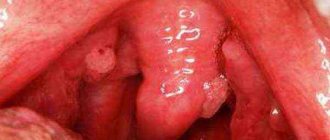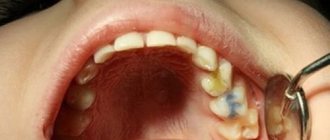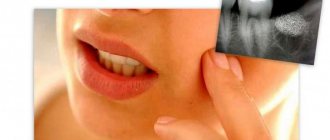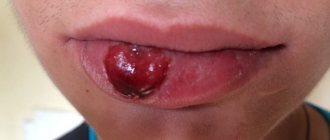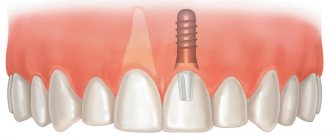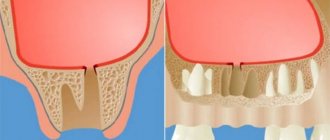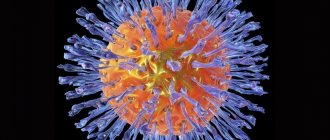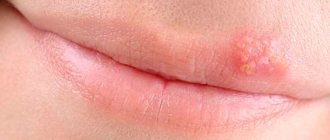White plaque in the mouth is always a reason to be wary, since the normal condition of the oral mucosa excludes such a phenomenon. However, the reasons may be different, including those that do not require treatment.
In this case, it is important to take into account all the characteristic features of the plaque, including the nature of its localization. For example, if this phenomenon is focused only on language, the factors that caused its formation may be:
- Use of certain medications;
- Diseases of the gastrointestinal tract;
- Various infections;
- Incorrect/insufficient oral hygiene;
If the plaque covers not only the tongue, but also other parts of the oral cavity, primarily the cheeks and palate, then it is one of the symptoms of candidiasis or, as it is also called, thrush.
This disease is fungal in nature. Its causative agent is the pathogenic fungus Candida, to which the disease owes its name. The disease is quite common, more common in women, but often occurs in men and children, especially infants. Candidiasis has a number of characteristic symptoms, thanks to which its identification does not cause difficulties. It responds well to treatment, especially if it is started at an early stage, immediately after the disease is detected.
Causes of peeling
The skin on these parts of the body is almost devoid of sebaceous glands. This makes it sensitive to many damaging factors:
- friction and pressure
- touch of clothes made of synthetic fabrics,
- detergents and hot water,
- dehydration in the hot season,
- ultraviolet irradiation,
- sudden loss of body weight,
- lack of fat in the diet.
These factors cause dry skin on the knees or elbows both in winter and in the warm season. To maintain the normal state of the epidermis, you need to periodically moisturize it . Knees and elbows may peel for the following reasons:
- Why does the skin on your feet peel and how to deal with it?
- Mechanical impact. For example, the habit of leaning on your elbows while working at a desk or cleaning the house without a mop on your knees leads to roughening and darkening of the skin. Over time, these areas may begin to crack and become painful. Mechanical factors also include wearing synthetic clothing.
- Diabetes mellitus is another cause of dryness. The disease is characterized by a violation of cellular nutrition. The skin dries and becomes thinner. Any mechanical impact leads to injury and inflammation. Areas of roughness appear on the palms, heels, knees and elbows.
- Anemia often leads to dryness, peeling, and cracks. The disease is associated with a decrease in hemoglobin in the blood, which worsens the overall health of a person. To understand whether anemia has caused skin problems, you need to take a clinical blood test.
- Lack of vitamins is a fairly common cause of dry epidermis. To maintain healthy skin, the fat-soluble vitamins tocopherol and carotene, as well as ascorbic acid, are important.
- Dermatological diseases (psoriasis, lichen, hyperkeratosis, ichthyosis) can also cause dryness and itching. In this case, the processes of keratinization of the upper layer are disrupted and redness, roughness and peeling occur. Psoriasis is characterized by the appearance of plaques with a shiny surface, which can be seen in the photo below. With ichthyosis, the skin becomes very flaky and covered with scales. Hyperkeratosis looks like lesions with thickened areas.
In addition, the cause of dehydration and the appearance of red spots may be the presence of endocrine disorders.
How and with what to lighten the skin on your knees
First of all, I present exactly the recipe that I used to lighten my skin. I’ve been regularly using a face mask with aspirin for several months now, and I decided to try it on my knees. Happened!
- 4-5 aspirin tablets
- 1 tsp toothpaste
Crush aspirin (acetylsalicylic acid, in regular tablets) in a mortar. I take a couple of blisters of 10 tablets at once and grind them in a coffee grinder. I use this powder as needed.
Mix a teaspoon of the simplest toothpaste with the resulting aspirin powder and apply to wet, steamed knees. You can walk around with this mixture for a while, 15 minutes was enough for me. Before rinsing off, massage your knees to remove dead cells.
It was with this mixture that I was able to lighten my knees in one go. This kind of knee care should not be done every day; after all, the paste noticeably dries out the skin, but once or twice a week, why not. After the mask, use a rich cream. I didn’t use the recipes described below, but I liked the composition of the masks. Take note.
Treatment
If the cause of peeling is hidden in a lack of vitamins, a course of vitamin therapy will help. The diet should contain seasonal vegetables and fruits, fatty dairy products, deep sea fish, nuts and vegetable oils.
Why the skin peels off on the fingers and palms of the hands: causes and treatment
Vitamin A (carotene) is found in dried apricots, carrots, pumpkin, beef liver, egg yolks and sweet peppers. Tocopherol slows down involutive processes in the body and improves skin regeneration. To obtain it, it is necessary to introduce liver, olive and flaxseed oil, and eggs into the diet. Ascorbic acid stabilizes cell growth, improves metabolism, and strengthens vascular walls. Sources of this vitamin are bell peppers, citrus fruits, black currants, and rose hips.
If inflammation, severe itching or growth of pathological lesions is observed, you should urgently contact a dermatologist.
Men rarely pay attention to dry elbows and go to a specialist only in case of an obvious medical problem. Meanwhile, it is better to start treatment at the moment the first symptoms appear, without starting the disease.
Ointments and creams
If your knees and elbows are itchy and flaky, therapy should begin with emollients and mild exfoliants.
For example, lubricate these areas with Salicylic ointment for 10 days, and then apply a nourishing cream to them.
During exacerbations, if the skin is dry, very irritated and itchy, you need to use Radevit ointment, Lipikar balm, Atoderm and Pitival cream twice a day. The area to be treated must first be cleaned.
If the problem area continues to itch and crack, then you need to use Boro Plus cream. It easily copes with dryness, itching, tightness and pain when cracking. After just 14 days of continuous use, the skin softens and becomes smooth.
Traditional methods
- How to deal with dry skin on your palms
- Homemade ointment with wax perfectly improves the condition of elbows and knees. It softens, exfoliates, disinfects and eliminates inflammation. To prepare the product, heat a teaspoon of wax in a water bath, add 1 teaspoon each of cocoa and shea butter. The mixture is stored in a glass container in the refrigerator and applied to problem areas daily.
- To prepare a softening mask, you can combine grated potatoes with honey, apply and fix for half an hour with a bandage, and after removing, treat the skin with cream.
- Baths are an effective remedy. For the procedure, you need to heat olive oil, immerse your elbows in it or make a compress on your knees. Thoroughly rub in any remaining product.
- Starch baths will help get rid of unpleasant symptoms. To prepare, dilute 2 teaspoons of starch in 250 ml of warm water. Immerse your elbows in the warm mixture for 10 minutes, then rinse off the remaining product and lubricate with moisturizer.
A popular folk method for exfoliating keratinized particles is:
- Apply a softening compress of glycerin, alcohol and vinegar (2:2:1). Use for 3 days for 20 minutes.
- After this, treat your knees with a scrub made from a mixture of honey, sea salt and castor oil (3:3:1).
- Then make a mask of lemon juice with vegetable oil (1:2), after 20 minutes, rinse with warm water and apply cream on top.
After just 10 days of using folk remedies, the skin of the hands or feet will take on a more well-groomed appearance, but the effect should be consolidated, so treatment must be continued for a month . After this, it is recommended to periodically apply compresses and masks (once every 2 weeks), and also do not forget to lubricate problem areas with cream.
Source: fr-dc.ru
Cleaning the sieve
When deciding how to clean a metal sieve, you can use one of the following effective methods.
Ammonia
An effective way to clean dishes and their components from traces of tea is ammonia diluted in cold water. It should be used as follows:
- Add a couple of teaspoons of ammonia to a glass half filled with clean water.
- Stir the solution thoroughly.
- Leave dirty dishes in it.
- Let the utensils soak in water.
- Clean away any remaining residue in hard-to-reach places.
Important! After cleaning, the teapot and sieve should be thoroughly rinsed in clean cold water.
Kitchen salt
One of the simplest, yet effective ways to clean a sieve is to use a concentrated saline solution:
- Make a saturated solution from kitchen salt.
- Dip a contaminated strainer into it.
- Wait half an hour - during this time the salt will remove dirt from small holes.
- Remove any remaining plaque with a sponge.
Important! Carrying out a periodic cleaning procedure will allow you to keep the teapot clean without significant expenditure of time and effort.
Dishwasher
A modern way to clean a teapot is to wash it in the dishwasher. This method is very effective, but its use is not always rational. Focus on the material from which the teapot is made. And remember that sometimes cleaning the strainer in the dishwasher is contraindicated, while a saline solution will definitely not harm anything.
Causes of dry skin
Changes in the structure of the skin on the knees can occur due to mechanical stress. Sports, exercises that require prolonged support on the knees, cleaning and other similar mechanical impacts can damage the upper layers of the epidermis. These factors must be taken into account when figuring out why the structure of the skin on the legs changes.
Possible diseases
Dry skin on the knees may indicate developing pathologies, and not only of the dermatological type. If we combine the most common diseases that occur with similar changes, including those on the knees, we can highlight the following:
- Mycosis or fungal disease. who believe that the main place of development of the fungus is the fingers or feet, but this assumption is not entirely correct. There are varieties of fungi that can parasitize on any area, including the skin of the knees and elbows. Symptoms include dry, flaky skin. As pathogenic microorganisms penetrate the epidermis, symptoms become more intense, and pustular zones may form. The keratinized and affected areas may appear as dry, dark skin on the knees. Treatment of mycosis is selected individually; in advanced stages, external agents and medications that act on the infection from the inside are used in combination.
- Lichen. Some types of lichen, including pink lichen, develop on any part of the body. Depending on the degree of development, the type of lichen, and the causes of its occurrence, the structure of the rash may change. Usually there is redness of the area, blisters may form, and part of the affected area is covered with dry peeling. If you have lichen on your legs, then most likely there are other problem areas.
- Violation of metabolic processes. Due to dysfunctions of internal organs and integrated systems, metabolic processes may not proceed correctly. Such changes affect the nutrition of the skin and its overall condition. For example, a similar reaction is observed in diabetes mellitus.
- Hormonal imbalance. The functions of the endocrine system, including the thyroid gland, affect the condition of the skin, hair and nails. Dryness, loss of elasticity, pallor and other deterioration in the structure of the epidermis are observed with hypothyroidism, when the thyroid gland begins to synthesize an insufficient amount of hormones. To normalize hormonal levels, special therapy is chosen based on eliminating the provoking factor.
- Vitamin deficiency, deficiency of nutritional compounds, fatty acids and other compounds beneficial to the body. In such conditions, white, dry skin on the knees without visible inflammation, blisters and other dermatological formations characteristic of infectious and other diseases may be observed.
- Allergy. Irritation can occur from contact with material containing chemically active components, from care products, as well as from mixtures prepared at home for cosmetic or medicinal purposes. Allergies can cause redness, intense itching and any other reaction.
In addition to the above pathological processes, other reasons can provoke dry knees, which a doctor will help determine after examination.
It is a misconception that dry skin can be restored solely by cosmetic methods. What is the possibility if the cause of structural changes in the epidermis lies in external influences or is not associated with serious problems in the body. For example, if lichen develops on the knees and measures are not taken to eliminate it, then additional moisturizing and the use of cosmetics will only worsen the situation. In such cases, an integrated approach is required with the mandatory use of an appropriate antifungal agent.
There is no need to delay contacting a therapist or dermatologist if dry or inflamed areas have formed on your knees or anywhere else. There is severe itching, deterioration of the condition, weakness, and fever. If chronic diseases of internal organs have already been diagnosed, or there are problems with the endocrine system, then you need to contact the appropriate specialist for additional examination.
Source: moinozhki.com
Nature of the problem
In winter, a person pays little attention to the condition of the skin, and the white spots and dots noticed in spring or summer could have been there earlier, but appeared on skin that had darkened from the first tan. Pigmentation disorders could arise due to a decrease in the production of melanin in the body.
Melanin is a coloring pigment that is present in the human body and is responsible for the color of some tissues. The normal state of pigment production depends on many components, including the following indicators:
- the content of nitrogen, hydrogen, oxygen and sulfur in the human body (depending on the type of pigment cells, and some other chemical compounds);
- amino acids, the composition of which in the pigment has not yet been sufficiently studied, and only some of them are known;
- normal or pathological state of melanocytes (specific skin cells in which pigmenting dye accumulates);
- functionality of desmosomes (natural bridges connecting melanocytes to keratinocytes and forming functional units);
- the intensity of activity of functional units that ensure the flow of the coloring pigment melanin into the layers subject to color design (this includes not only the hair and iris of the eye, but also the upper layer of the skin);
- the problem may also be in the state of keratinocytes, of which there are about 40 per 1 melanocyte;
- Pigmentation disorders can also occur from disturbances in phagocytosis, which is the natural transition of pigment from the openings of the melanocyte to the surrounding keratinocytes.
White spots can appear on the top layer of skin due to any of the listed failures in the process of natural pigmentation, and the knee in this case acts as a convex part of the limb, which is constantly exposed to the sun's rays. Tanning is also the development of pigmentation under the influence of ultraviolet radiation, and disruption of the natural cycle leads to the appearance of white (not colored by pigment) spots.
Melanin synthesis occurs on command, and under the influence of a specific hormone provided by nature, and it is likely that depigmentation occurred under the influence of hormonal imbalance and disruption of the functionality of the endocrine system. This option involves contacting an endocrinologist and restoring normal hormonal levels.
In women, such disruptions are temporary manifestations, especially during the menstrual cycle, during pregnancy or menopause. Disruption of melanocyte production or the natural pigmentation process can occur for several reasons independent of hormone production.
How to deal with white sediment
The first, most accessible and easiest way to deal with white sediment in water is boiling. When heated to one hundred degrees, the hardness salts in the water precipitate, the color of which is white - it is very clearly visible on the walls of pots or kettles. This type of deposit is usually called scale. During boiling, the water softens, but subsequently washing such dishes with sediment is quite problematic - to return them to their original state, you will have to boil the water in citric acid or vinegar for some time so that the acidic environment dissolves the sediment.
Another simple and common method of dealing with white sediment is the use of special water purification filters, which are sold in stores. They come in different capacities and performance, so it is better to do a water analysis first to know which one to buy. Usually on the packaging of such filters there is a designation “for hard water.” Using softeners is more effective than boiling, but it is also more expensive, since the cartridges will have to be changed periodically. In this case, the service life of the cartridge will be inversely proportional to the water hardness - the higher it is, the shorter the service life.
The issue of water softening and removal of white sediment in country houses with autonomous water supply sources is especially acute. After all, if in cities municipal enterprises deal with water treatment and purification issues, then in country houses this problem falls entirely on the shoulders of their owners. As a rule, water in such houses comes from artesian wells. And if just recently it was considered absolutely pure, it could be safely drunk without resorting to water treatment, but today the situation is somewhat different - harmful substances have penetrated deep underground, as a result of which artesian water also needs to be treated.
Probable causes
In pediatrics, it has long been noticed that a child develops white spots under the knees, on the skin, sometimes white spots are found on the knees, which are accompanied by cracking, peeling or other pathological symptoms. The first version that appears to a dermatologist is a fungal infection of the skin.
Mycotic infections in the modern world are a real disaster; they can be contracted in any public place, including vehicles, and often the best way to cure white spots or dots in a child or adult is the use of antifungal drugs. A child's knee may turn white in other cases. The reason may be:
- hypomelanosis (a congenital malformation, sometimes inherited), in which there is insufficient pigment production due to an abnormally low total number of melanocytes;
- Pityriasis alba is a special form of dermatitis that causes temporary dysfunction of the cells responsible for the color of the skin in certain places;
- vitiligo is an autoimmune disease in which certain areas of the skin lose their natural pigmentation, and this process is not only symmetrical and extremely difficult to treat, but also poses an immediate danger to the carrier, since melanin protects the body from exposure to ultraviolet rays;
- pink lichen or Zhiber's lichen, which can be easily identified by the presence of a non-pigmented area of a specific plaque in place (it is not dangerous to others and goes away, over time, on its own).
Contacting a dermatologist will help to avoid not only possible errors in diagnosing the condition of an adult and child, but will also protect against the use of medications that are used for self-prescription and do not bring the desired effect due to inappropriate use.
Prevention of plaque
In addition to combating plaque that has already formed, you can prevent its occurrence. To do this, you need to follow a number of simple rules:
- After boiling, drain all the liquid, do not leave it inside until it cools completely.
- Use filtered or settled water.
- Before switching on, wash the device.
- Clean in a timely manner using the means described above.
Thus, the problem of the appearance and elimination of plaque in a teapot is very relevant at the moment. The article discussed in detail how to eliminate various types of plaque. Using any of them will help achieve the desired effect.
And remember, it is important to use any equipment carefully and properly care for it. Then it will last for a long time.
Preventive measures
The complex process of synthesizing and transporting pigment depends on many components and rarely occurs in a healthy body. Often the disorder occurs due to poor nutrition, lack of necessary vitamins, mineral components, lack of sleep and fatigue, or simple overwork.
Clinical studies have proven the relationship between the processes of producing protective pigment and diseases of internal organs, especially those that are long-term or chronic. In children, such dysfunctions can occur during periods of intense growth, which lead to hormonal imbalances due to the lag of certain systems in development.
It is also worth thinking about the possible consequences of dubious cosmetic products with aggressive and whitening effects, or staying in a solarium, which can not only enhance, but also suppress the production of melanocytes. Treatment should only be carried out as prescribed by a doctor. There is no point in masking white spots; this may provoke further development of the process.
Masking with decorative cosmetics usually does not give a positive result when it comes to pigmentation disorders, and on the knees it also brings everyday inconvenience. If this type of pigmentation is detected, you must consult a doctor who will find out the causes of the disease and give recommendations on how to eliminate them.
Source: NogoStop.ru
How to remove tea stains?
The following substances will help get rid of tea deposits inside the teapot:
- Vinegar. To clean the internal surfaces of the kettle, use an acid solution whose concentration is no more than 9%. A small amount of liquid is applied to a kitchen sponge, which is used to wipe the teapot. This method is not very convenient when cleaning the strainer, so it is usually soaked in a solution of acetic acid and washed under a stream of clean water.
- Lemon juice. Thanks to the acidic environment, the residue remaining after brewing tea will quickly dissolve. The dishes will acquire a pleasant citrus aroma.
- Kefir. A popular way in villages to remove traces of tea. To obtain the desired effect, fill the container with milk drink and leave overnight. In the morning, just rinse the teapot.
- Baking soda. The white powder has long been known for its cleaning properties. Therefore, for many years it has been used to remove food stains from the surface of not only teapots, but also any other utensils.
Important! When working with aggressive cleaning compounds, it is imperative to use gloves. They will reliably protect the skin from the harmful effects of the active substance.
Causes of peeling
The skin on these parts of the body is almost devoid of sebaceous glands. This makes it sensitive to many damaging factors:
- friction and pressure
- touch of clothes made of synthetic fabrics,
- detergents and hot water,
- dehydration in the hot season,
- ultraviolet irradiation,
- sudden loss of body weight,
- lack of fat in the diet.
These factors cause dry skin on the knees or elbows both in winter and in the warm season. To maintain the normal state of the epidermis, you need to periodically moisturize it . Knees and elbows may peel for the following reasons:
- Why does the skin on your feet peel and how to deal with it?
- Mechanical impact. For example, the habit of leaning on your elbows while working at a desk or cleaning the house without a mop on your knees leads to roughening and darkening of the skin. Over time, these areas may begin to crack and become painful. Mechanical factors also include wearing synthetic clothing.
- Diabetes mellitus is another cause of dryness. The disease is characterized by a violation of cellular nutrition. The skin dries and becomes thinner. Any mechanical impact leads to injury and inflammation. Areas of roughness appear on the palms, heels, knees and elbows.
- Anemia often leads to dryness, peeling, and cracks. The disease is associated with a decrease in hemoglobin in the blood, which worsens the overall health of a person. To understand whether anemia has caused skin problems, you need to take a clinical blood test.
- Lack of vitamins is a fairly common cause of dry epidermis. To maintain healthy skin, the fat-soluble vitamins tocopherol and carotene, as well as ascorbic acid, are important.
- Dermatological diseases (psoriasis, lichen, hyperkeratosis, ichthyosis) can also cause dryness and itching. In this case, the processes of keratinization of the upper layer are disrupted and redness, roughness and peeling occur. Psoriasis is characterized by the appearance of plaques with a shiny surface, which can be seen in the photo below. With ichthyosis, the skin becomes very flaky and covered with scales. Hyperkeratosis looks like lesions with thickened areas.
In addition, the cause of dehydration and the appearance of red spots may be the presence of endocrine disorders.
Reasons for the formation of plaque on the cup
Tea leaves contain tannins (tannins and catechins), which give the drink a characteristic bitter and astringent taste. It is they who, when reacting, form a thin film on the surface of the drink. When we drink tea, the cup tilts, and the film settles on the walls of the vessel and subsequently dries out. Over time, it darkens and takes on the appearance of an unpleasant coating. Interesting fact: the concentration of tannin in living tea leaves depends on the time of year and day. It reaches its peak in the spring, as well as in the morning and evening. At noon, the amount of tannins decreases.
Treatment
If the cause of peeling is hidden in a lack of vitamins, a course of vitamin therapy will help. The diet should contain seasonal vegetables and fruits, fatty dairy products, deep sea fish, nuts and vegetable oils.
Why the skin peels off on the fingers and palms of the hands: causes and treatment
Vitamin A (carotene) is found in dried apricots, carrots, pumpkin, beef liver, egg yolks and sweet peppers. Tocopherol slows down involutive processes in the body and improves skin regeneration. To obtain it, it is necessary to introduce liver, olive and flaxseed oil, and eggs into the diet. Ascorbic acid stabilizes cell growth, improves metabolism, and strengthens vascular walls. Sources of this vitamin are bell peppers, citrus fruits, black currants, and rose hips.
If inflammation, severe itching or growth of pathological lesions is observed, you should urgently contact a dermatologist.
Men rarely pay attention to dry elbows and go to a specialist only in case of an obvious medical problem. Meanwhile, it is better to start treatment at the moment the first symptoms appear, without starting the disease.
Ointments and creams
If your knees and elbows are itchy and flaky, therapy should begin with emollients and mild exfoliants.
For example, lubricate these areas with Salicylic ointment for 10 days, and then apply a nourishing cream to them.
During exacerbations, if the skin is dry, very irritated and itchy, you need to use Radevit ointment, Lipikar balm, Atoderm and Pitival cream twice a day. The area to be treated must first be cleaned.
If the problem area continues to itch and crack, then you need to use Boro Plus cream. It easily copes with dryness, itching, tightness and pain when cracking. After just 14 days of continuous use, the skin softens and becomes smooth.
Why doesn't a coating form when adding milk to tea?
0
You may notice that when milk is added, plaque does not appear or is barely noticeable. There's a reason for this. Milk contains casein protein. By reacting with tannins, it reduces their concentration by an average of 80%. At the same time, milk also reduces the beneficial properties of tannins and catechins, so you should not overuse it by adding it to the drink.
